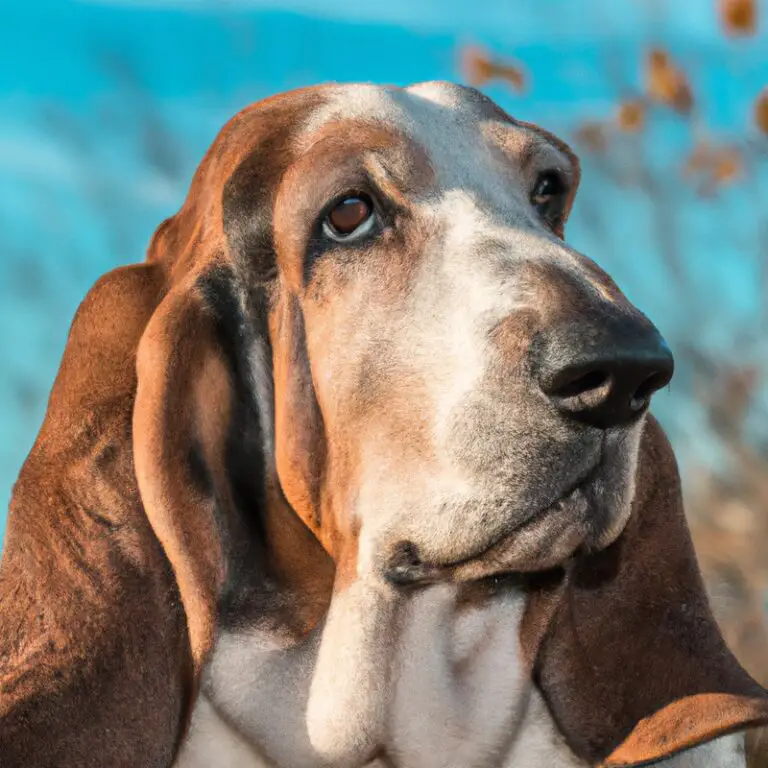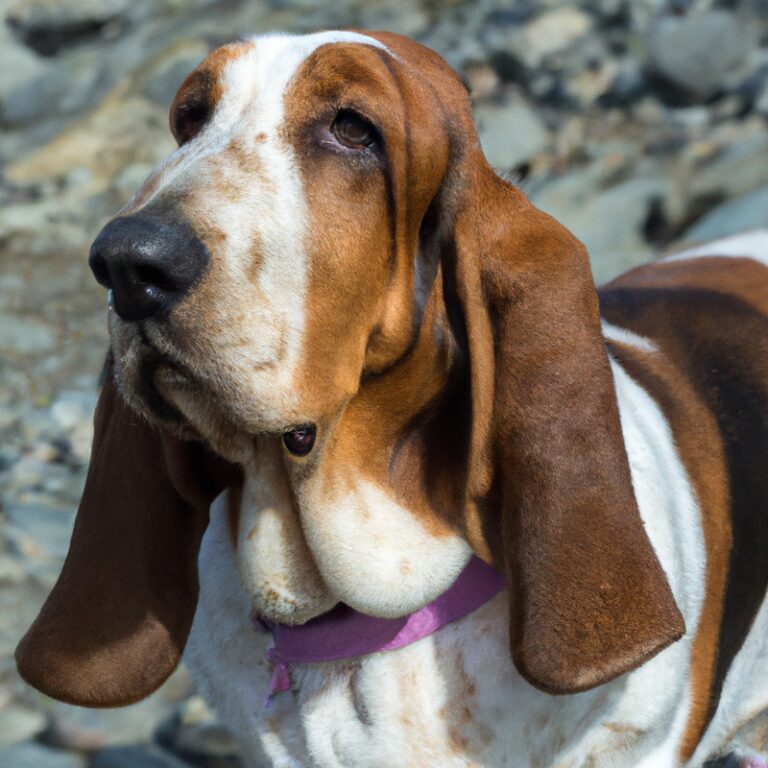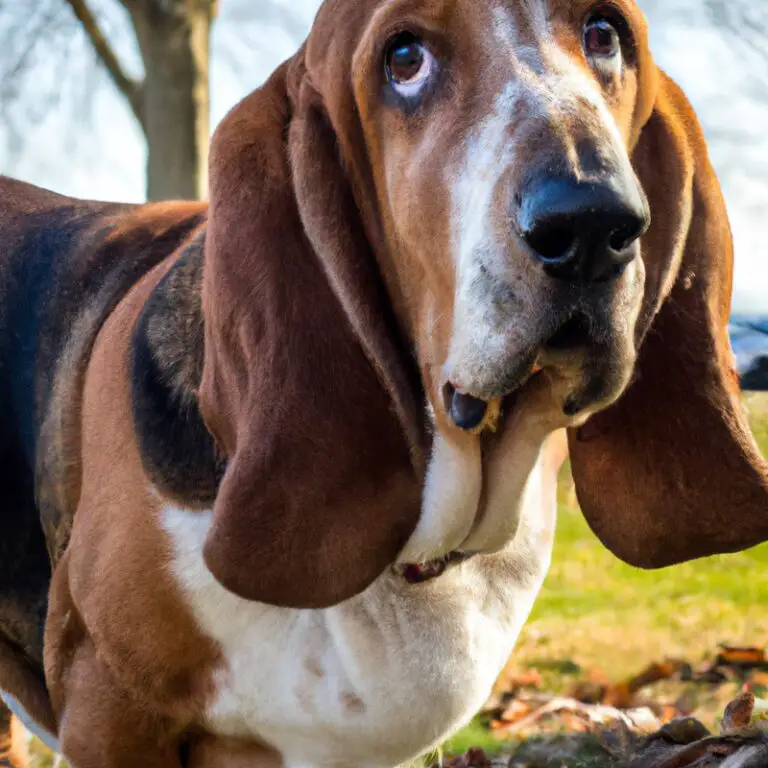Can Basset Hounds Be Left Alone With Children?
Key Takeaways:
- Basset Hounds can generally be trusted to be left alone with children due to their patient and gentle nature.
- However, it is important to always supervise interactions between Basset Hounds and children to prevent any potential accidents or mishaps.
- Basset Hounds may have a tendency to become lazy or bored when left alone for long periods of time, so providing them with mental stimulation and exercise is crucial.
- Proper training and socialization from an early age can ensure that Basset Hounds develop good behavior around children and other family members.
Are you a dog lover considering adding a Basset Hound to your family?
Or perhaps you already have one and are wondering if they can be left alone with your children?
Well, you’ve come to the right place! As an expert in dog behavior and training, I’m here to shed some light on this topic.
Basset Hounds are known for their unique appearance and lovable personality, but can they truly be trusted to interact safely with children?
In this article, we will explore the characteristics and temperament of Basset Hounds, discuss the importance of supervision and safety measures, delve into training and socialization techniques, examine individual factors of both the dog and child, provide tips for successful supervision, and explore alternative options for alone time.
So, let’s jump right in and find out if Basset Hounds can be left alone with children!
Basset Hounds: Characteristics and Temperament
Overview of Basset Hound breed
Basset Hounds are a breed of dog known for their distinctive appearance and calm, friendly temperament. They have short, stocky bodies, long ears, and droopy eyes.
Basset Hounds are a medium-sized breed, weighing between 50-65 pounds.
They are known for being excellent family pets, as they are patient and gentle with children. Bassets are also known for their love of food and can be prone to obesity if not monitored.
They require moderate exercise and regular grooming to keep their coat clean and healthy.
Overall, Basset Hounds make wonderful companions for families and individuals alike.
Character traits of Basset Hounds
Basset Hounds have some distinct character traits that make them stand out. Firstly, they are known for their laid-back and easygoing nature.
They tend to be calm and patient, which can make them great companions for children.
Secondly, Basset Hounds are also known for their stubbornness, which can make training a challenge. However, with patience and consistency, they can learn and follow commands.
Lastly, their exceptional sense of smell is a prominent trait, as they were originally bred for hunting.
Overall, Basset Hounds are gentle, friendly, and loyal dogs that can bring joy to any family.
Temperament of Basset Hounds
Basset Hounds are known for their friendly and easy-going temperament.
They are generally calm, gentle, and patient, which makes them great companions for families, including children.
These dogs are often loyal and enjoy spending time with their loved ones.
However, it’s important to note that individual temperaments can vary, so it’s essential to assess each dog’s behavior and personality before leaving them alone with children.
Additionally, proper training and socialization are crucial to ensure a harmonious interaction between Basset Hounds and children.
Supervision and Safety Measures
Importance of supervision for children and dogs
Supervision is vital when it comes to children and dogs.
It ensures the safety and well-being of both parties.
As an expert, I emphasize the importance of continuous monitoring to prevent any potential accidents or conflicts.
Children may unintentionally provoke or mishandle a dog, while dogs can be unpredictable in their reactions.
Supervision allows for immediate intervention if needed and provides an opportunity to teach children about proper behavior and respect for animals.
It’s a responsible and necessary approach to ensure a positive and harmonious relationship between children and dogs.
Potential risks when leaving dogs alone with children
Leaving dogs alone with children can pose potential risks.
Dogs, including Basset Hounds, may not always tolerate certain behaviors from children, such as pulling tails or ears.
This can lead to bites or injuries.
Children may also unknowingly hurt dogs during playtime, causing the dogs stress or discomfort.
Additionally, dogs may become overwhelmed or scared by a child’s unpredictable movements or loud noises, which can result in defensive reactions.
It is important to carefully supervise interactions between dogs and children to prevent any potential harm or accidents.
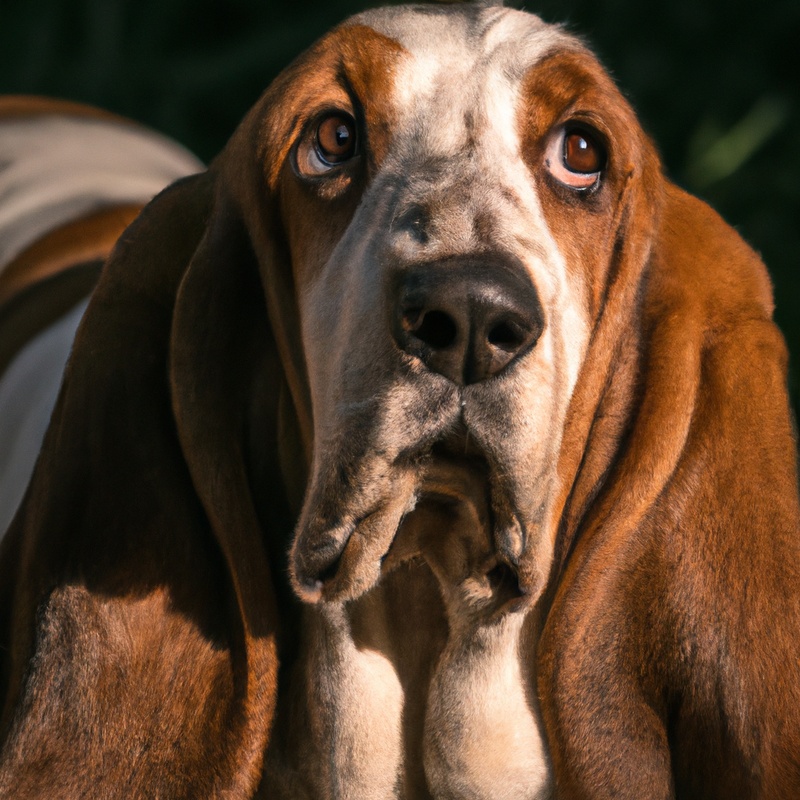
Factors to consider before leaving Basset Hounds alone with children
Before leaving Basset Hounds alone with children, there are important factors to consider.
- Age and Maturity: Assess the child’s age and maturity level to determine if they can safely interact with a dog.
- Dog’s Temperament: Understand the Basset Hound’s temperament. Are they patient, tolerant, and gentle?
- Training: Ensure that the Basset Hound is well-trained and responds reliably to commands.
- Supervision: Even if the dog is trustworthy, it’s crucial to have adult supervision to ensure safety for both the child and the dog.
- Child-Dog Interactions: Teach children how to interact with dogs respectfully and safely, including appropriate petting and play.
- Individual Considerations: Every child and dog is unique, so consider their specific behavior, personality, and compatibility before leaving them alone.
Training and Socialization
Training techniques for Basset Hounds
When it comes to training Basset Hounds, consistency and positive reinforcement are key.
Here are some effective techniques:
- Start with basic commands like “sit,” “stay,” and “come.” Use treats and praise to reward good behavior.
- Use short training sessions of 5-10 minutes to keep your Basset Hound engaged and focused.
- Be patient and avoid punishment-based methods, as Basset Hounds respond better to positive reinforcement.
- Use clicker training or a marker word to let your dog know when they’ve done something right.
- Socialize your Basset Hound with other dogs and people to ensure they are comfortable and well-behaved in various situations.
Socializing Basset Hounds with children
When socializing Basset Hounds with children, it’s important to introduce them in a controlled and calm environment.
Start with supervised interactions, allowing the children to approach the dog gently and calmly.
Encourage the children to pet the Basset Hound in a gentle and respectful manner, avoiding any rough play.
Teach the children to respect the dog’s boundaries and signs of discomfort.
Positive reinforcement and rewards can be used to reinforce good behavior and create positive associations between the dog and the children.
With patience and consistency, Basset Hounds can become well-socialized with children.
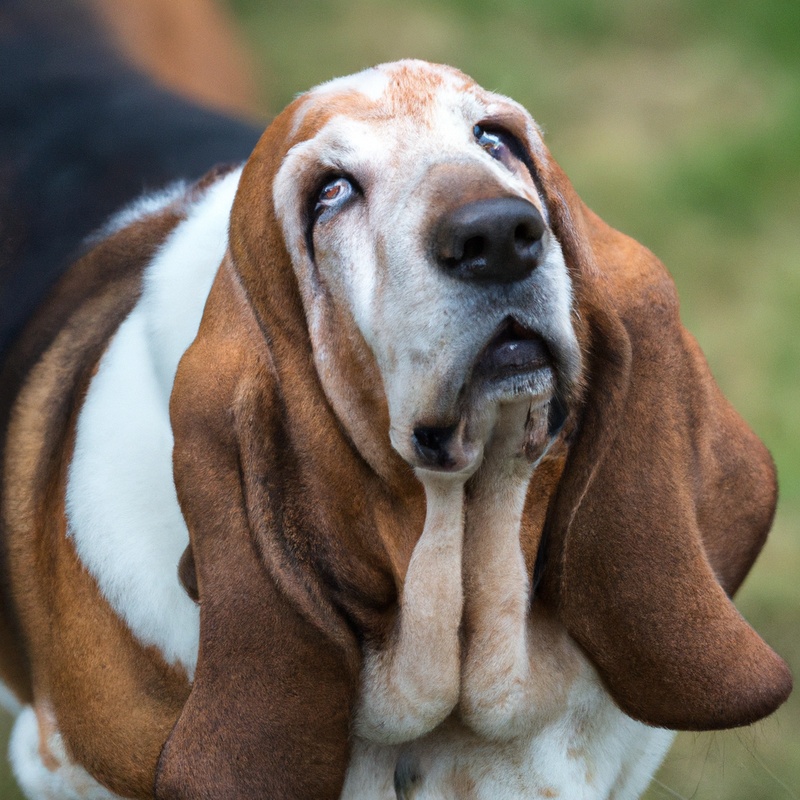
Indications of a well-trained and socialized Basset Hound
A well-trained and socialized Basset Hound can demonstrate certain indications. Firstly, they will respond promptly and appropriately to basic commands, such as sit, stay, and come.
Additionally, a well-trained Basset Hound will walk calmly on a leash without pulling or lunging.
They will also exhibit good manners around people and other animals, showing no signs of aggression or fear. Socialized Basset Hounds will be comfortable and relaxed in various environments, and they will interact positively with both familiar and unfamiliar individuals.
Proper training and socialization are key to having a well-adjusted and well-behaved Basset Hound.
Individual Dog and Child Factors
Assessing the dog’s behavior and temperament
Assessing a dog’s behavior and temperament is essential when considering if they can be left alone with children.
Look for signs of aggression, fear, or excessive excitability.
Consider their past experiences and interactions with children.
A well-socialized and calm dog is more likely to be suitable.
Additionally, observe how the dog responds to handling, noise, and unpredictable movements.
It’s important to remember that each dog is unique, so individual assessment is crucial.
Always consult with a professional if unsure.
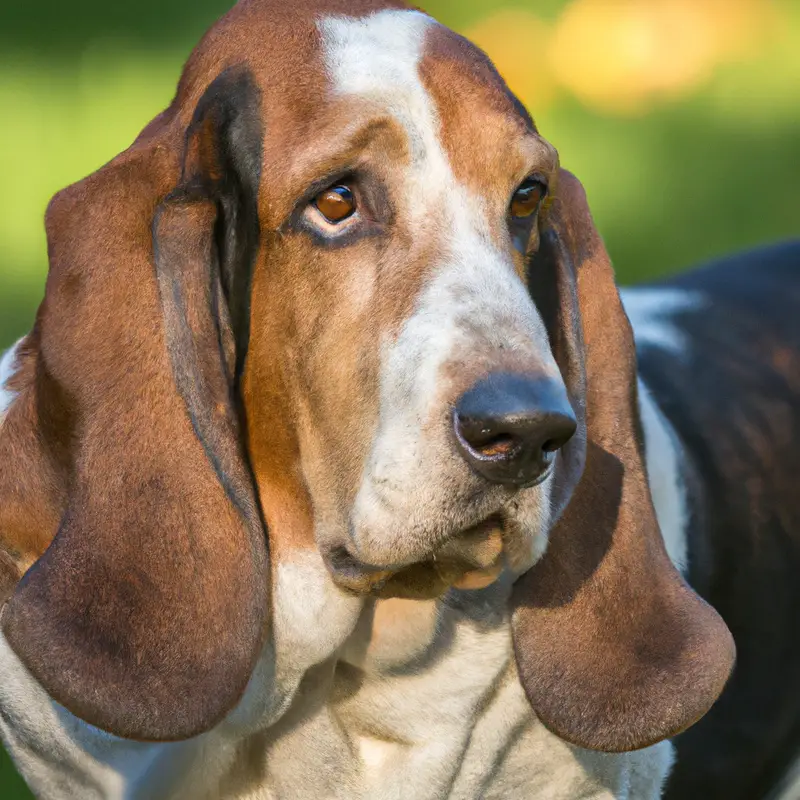
Analyzing the child’s behavior and maturity level
Analyzing the child’s behavior and maturity level is crucial when considering whether a Basset Hound can be left alone with them. It is important to assess if the child is responsible and mature enough to interact safely with the dog.
Consider their ability to follow instructions, their understanding of boundaries and respect for animals, and their overall behavior around pets.
A child who demonstrates empathy, kindness, and a gentle nature towards animals is more likely to have a positive and safe interaction with a Basset Hound.
Matching Basset Hounds with compatible children
Matching Basset Hounds with compatible children is essential for a safe and harmonious relationship.
When considering compatibility, it is important to assess the dog’s behavior and temperament, as well as the child’s behavior and maturity level.
Basset Hounds generally have a gentle and calm nature, making them well-suited for households with older children who can understand and respect their needs.
It is also important to match energy levels and activity levels between the dog and child to ensure a good match.
Proper matching will help create a positive and enjoyable experience for both the dog and the child.
Tips for Successful Supervision
Establishing rules and boundaries for children and dogs
To ensure a safe and harmonious environment for both children and dogs, it is essential to establish rules and boundaries.
Here are some key points to consider:
- Teach children to respect the dog’s personal space and give them the freedom to retreat when needed.
- Set clear guidelines for appropriate interactions, such as no pulling ears or tails, no climbing on the dog, and no disturbing them during meal or sleep times.
- Encourage gentle and supervised play sessions, avoiding rough play or taunting behaviors.
- Teach children the importance of not bothering the dog while they are eating or chewing on their toys.
- Show children how to approach a dog calmly and slowly, allowing the dog to sniff them first before attempting to pet them.
By establishing these rules and boundaries, you can create a safe and respectful environment for both children and dogs to coexist happily.
Creating a safe and dog-friendly environment
Creating a safe and dog-friendly environment is essential when leaving Basset Hounds alone with children. Here are a few tips to consider:
- Remove any potential hazards: Keep small objects, toxic substances, and electrical cords out of reach.
- Provide a designated space: Set up a comfortable area where the Basset Hound can retreat when they need alone time.
- Use baby gates or barriers: Relegate certain areas where the dog can safely roam without direct access to children’s rooms or play areas.
- Establish clear rules: Teach children to respect the dog’s space and not to disturb them while eating or sleeping.
- Proper supervision: Even in a safe environment, it’s important to supervise interactions between Basset Hounds and children to prevent any potential accidents.
Teaching children how to interact with Basset Hounds safely
Teaching children how to interact with Basset Hounds safely is essential for their well-being and the well-being of the dog. Here are some key tips:
- Respect personal space: Teach children to give the dog space when it eats, sleeps, or shows signs of needing alone time.
- Gentle touch: Instruct children to pet the Basset Hound gently, avoiding rough or aggressive behavior.
- Supervision: Always supervise interactions between children and Basset Hounds, especially with younger kids who may not fully understand how to interact with dogs.
- No teasing or pulling: Ensure children understand that teasing, pulling, or causing distress to the dog is not acceptable.
- No hugging or climbing: Basset Hounds may not appreciate tight hugs or being climbed on, so teach children to interact with them in a more appropriate manner.
Alternative Options for Alone Time
Providing appropriate exercise and mental stimulation for Basset Hounds
Basset Hounds require regular exercise to stay healthy and mentally stimulated. Daily walks or jogs are important to satisfy their exercise needs.
Engaging in activities like playing fetch or participating in dog sports can also provide mental stimulation.
Puzzle toys and interactive games can help keep their minds sharp. It’s important to find a balance between physical and mental activities for Basset Hounds to prevent boredom and behavioral issues.
Using crates or designated safe spaces when necessary
When it’s necessary to keep your Basset Hound safe and contained, using crates or designated safe spaces can be helpful. Crates provide a secure and comfortable space for your dog when you’re unable to supervise them directly.
Be sure to choose a crate that is appropriately sized for your Basset Hound, allowing them to stand up and turn around comfortably.
Designated safe spaces, such as a gated area or a dog-proofed room, can also provide a secure area for your dog when you need to step away temporarily. Remember to always introduce your dog to their crate or safe space in a positive and gradual manner to create a positive association.
Hiring professional help or pet sitters
If you’re considering leaving your Basset Hound alone with children, it’s important to prioritize their safety and well-being.
Hiring professional help or pet sitters can be a great alternative option to ensure proper supervision and care for both the dog and the children.
These professionals have the experience and knowledge to handle any situation that may arise, and can provide the necessary attention and interaction that your Basset Hound needs.
Additionally, they can help maintain a routine for your dog and provide exercise and mental stimulation while you’re away.
Hiring professional help or pet sitters can give you peace of mind knowing that your Basset Hound and children are in capable hands.
Final Verdict
While Basset Hounds can be wonderful family pets, it is important to exercise caution when leaving them alone with children. Supervision is crucial to ensure the safety and well-being of both the dog and the child.
Proper training and socialization can also play a crucial role in creating a harmonious relationship between Basset Hounds and children.
Assessing the individual characteristics of both the dog and the child is essential for a successful match. Additionally, implementing practical tips for supervision and providing alternative options for alone time can further enhance the safety and happiness of everyone involved.
Remember, a responsible and vigilant approach is key when it comes to the interactions between Basset Hounds and children.



